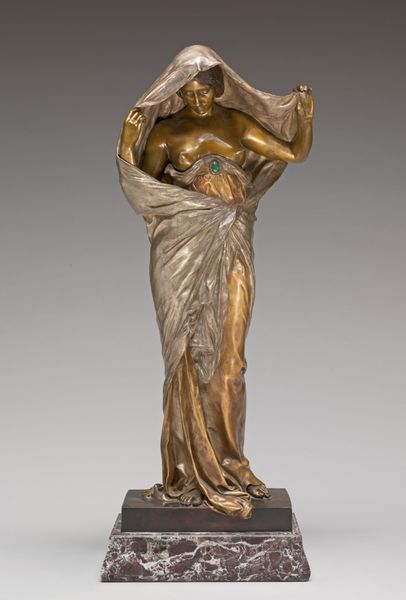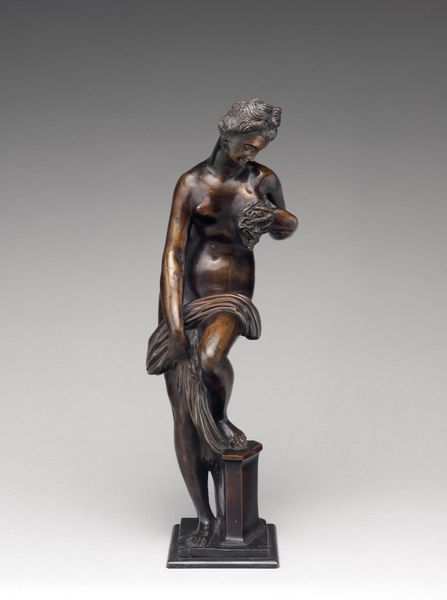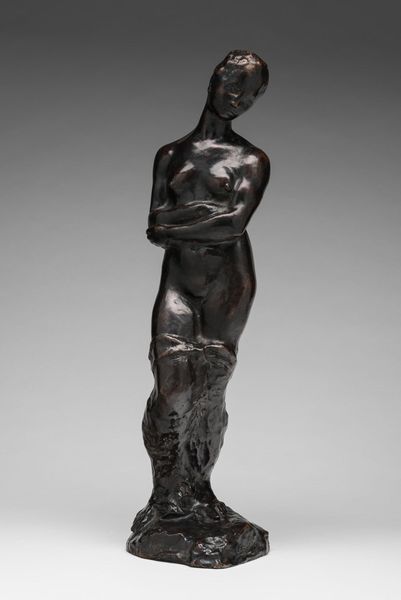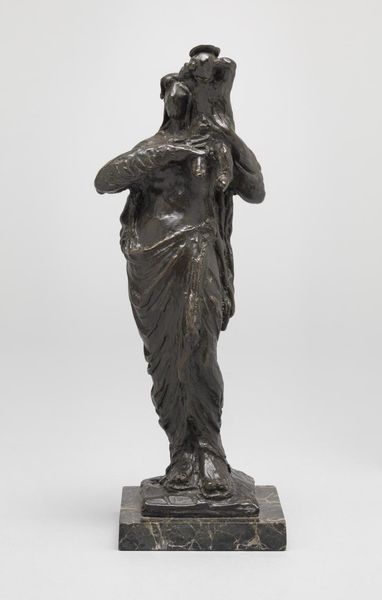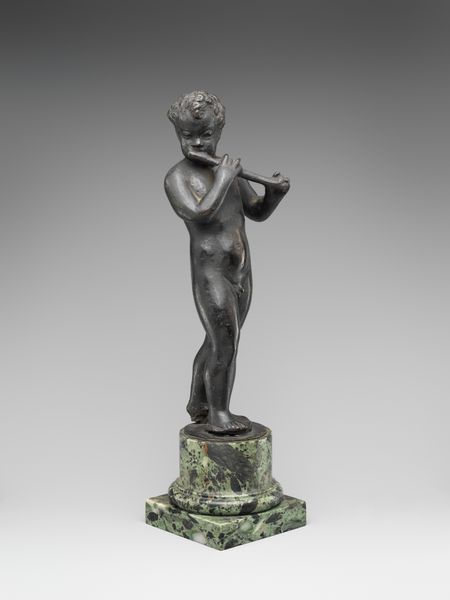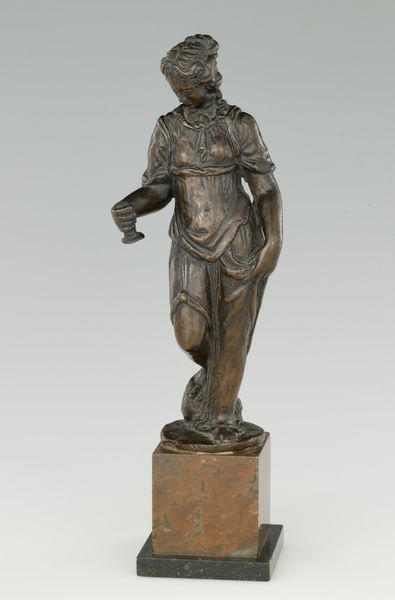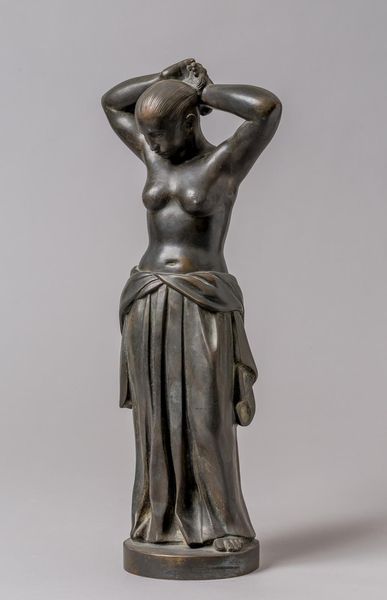
bronze, sculpture
#
art-nouveau
#
sculpture
#
bronze
#
figuration
#
sculpture
#
nude
Dimensions: unframed: 8 1/2 x 3 x 3 in. (21.59 x 7.62 x 7.62 cm)
Copyright: National Gallery of Art: CC0 1.0
Curator: Standing before us is Gaston Lachaise's "Standing Nude," a bronze sculpture whose creation date remains, rather poetically, unknown. My first thought on seeing her? Bronze with all the warmth of terracotta... Editor: Warmth definitely. The pose, though, feels consciously classical. Almost Venus-like, emerging from the sea perhaps. She's substantial, yes, but that draping fabric and the hand coyly shielding her chest…it whispers of ancient iconography. Curator: Lachaise does have that touch of antiquity, doesn’t he? But it's also about celebrating the female form in its voluptuous entirety, which feels radically different, doesn't it? Forget idealisation. This feels like…real adoration of flesh. Editor: Adoration tinged with something more complicated, maybe. Nudity always carries a weight of societal expectations, you know. That slight gesture of concealment might also hint at a vulnerability beneath the bravado. Are we meant to gaze or look away? Curator: Oh, that’s the rub, isn’t it? She doesn’t meet our gaze. She is her own island. Perhaps this is her own personal narrative on classical form through self-assured modernity! She defines herself! Editor: It's compelling how a timeless medium like bronze continues to channel so many stories and psychological depths. Consider the shift in depictions of the female form across centuries, from goddess worship to objectification… Curator: Indeed. You put Lachaise’s Nude alongside, say, a Rubens painting and a photograph by Mapplethorpe, and suddenly we see her differently again. She is a celebration! Editor: Each artwork refracting back upon the other, altering our perspective. I'll certainly remember the visual language around classical female imagery from now on, particularly with how Lachaise seems to respond to it through this voluptuous sculpture. Curator: Absolutely, it's a beautiful paradox that I will now remember and feel forever connected to, thinking about its forms through different interpretations.

